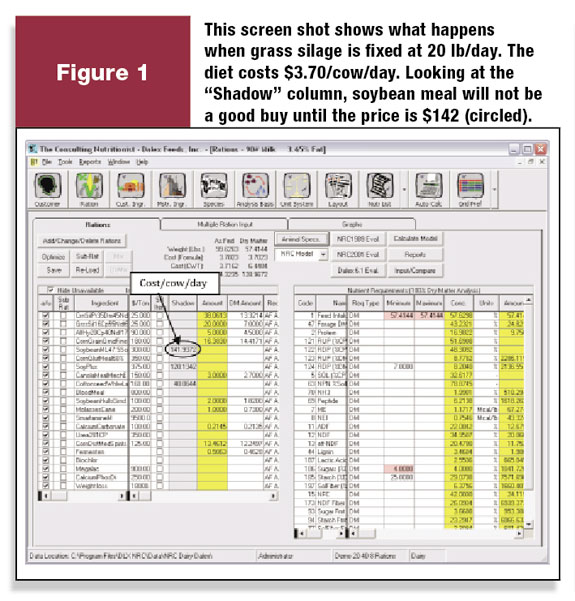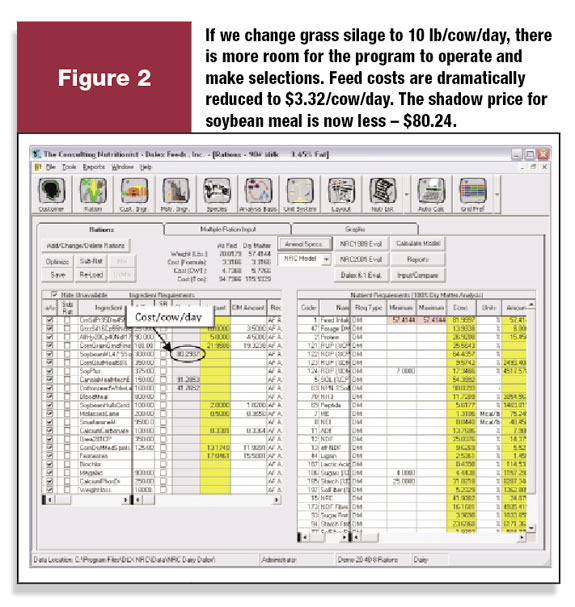What determines the value of ingredients? When do ingredients no longer contribute value to your ration? What exactly are “value” ingredients? Dairy ration ingredients are a major operating expense for dairy producers. Using opportunity ingredients and on-farm feedstuffs helps keep your ration costs down. But ingredients need to provide true benefit, whether it’s in the end cost or in the nutritional value of your ration.
There are two things that determine ingredient value:
The nutrient profile relative to what you need for your dairy.
The availability and price of other ingredients.
Your rations always need to contain the proper nutrients to meet your dairy’s goals. But good management also includes the flexibility to use opportunity ingredients, taking advantage of surplus inventories and reduced pricing.
To find the value in your ingredients, you need to compare ingredient costs and nutrient contributions when they are incorporated into your ration. In some cases, a cheaper ingredient may not provide the nutrients your ration needs. When you have the ability to compare rations, you can get animal performance improvements while insuring that your costs are as low as possible.
Formulating rations accurately is a rather complex process, although personal computers and software have made ration balancing simpler. Ration balancing software is only as good as its ingredient base. Accurate information on your ingredients will produce a better ration outcome. Once the nutritional requirements are established, ration balancing software compares all the nutrients you need with the ingredients you have available.
Your feed formulator supplements the software with an understanding of the variability of your ingredients, the amount that can reasonably be allowed in the diet without influencing performance, as well as awareness of the nutrient requirements and tolerance ranges for the nutrients.
Ration balancing programs provide a list of ingredients available for inclusion in your formulas. The software also allows the formulator to “fix” certain ingredients. As an example, a dairy farm manager has a large corn silage inventory. Each cow must receive at least 5 pounds per day. The 5 pounds is fixed into the formula. The ration balancing program then balances around the nutrients that the corn silage provides.
A ration balancing program is designed to produce formulas that meet your desired specifications at the lowest possible cost. The formula must meet all of your nutrient specifications and still result in a feasible ration. Some ingredients are selected. Others are rejected.
As your nutrition consultant develops rations, the ration balancing software might reject ingredients because the prices were too high, they lack the necessary nutrient profile, or the formula using the ingredient would not be feasible.
Often, you can substitute one ingredient with another ingredient with a similar nutritional value. This is important if the ingredient used in the ration is in limited supply, or if an alternative ingredient might become available at a better price.
What might the better price be? Good feed formulation programs help you make that decision. Not only does the program yield the best cost, it also provides a “shadow price” for ingredients to generate a feasible solution to your nutrient requirements.
A shadow price for an ingredient represents the maximum cost at which the ingredient would be included in the formula. Ingredients that are included in the formula results have a shadow price of zero.
Shadow prices vary with each of your rations. That’s because they are selected to meet your specific set of nutrient needs, and the prices are relative to the availability of the nutrients from other ingredients.

Figure 1 shows what happens when grass silage is fixed at 20 pounds per day.
The diet costs $3.70 per cow per day.
Looking at the “shadow” column, soybean meal will not be a good buy until the price is $142.00 (oval).

In Figure 2 , if we change grass silage to 10 pounds per cow per day, there is more room for the program to operate and make selections.
Feed costs are dramatically reduced to $3.32 per cow per day. The shadow price for soybean meal is even less – $80.24.
Of special note, there was a shadow price for SoyPlus in the first example, but not in the second.
In the second example, SoyPlus will not contribute to a feasible solution and is no longer an option.
Shadow pricing in your ration balancing program gives you the opportunity to evaluate an ingredient bargain.
Does the bargain save you money? Or does the bargain cost you production because it can’t provide the necessary nutrients?
Make sure your ingredient choices work for your herd production and health goals, as well as your bottom line. PD

-
Essi Evans
- Dairy Nutrition/Model Adviser
- Dalex Livestock Solution
- Email Essi Evans







